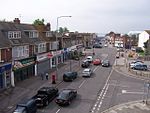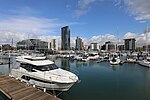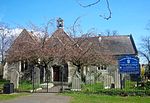Centenary Quay
Buildings and structures in SouthamptonUse British English from February 2016
Centenary Quay (also known as Woolston Riverside) is a new development which has commenced in the suburb of Woolston in Southampton, England. The development is being built on the site of 31 acres, which had been home to Vosper Thorneycroft shipbuilders because of its ideal placement on the eastern bank of the River Itchen.
Excerpt from the Wikipedia article Centenary Quay (License: CC BY-SA 3.0, Authors).Centenary Quay
John Thorneycroft Road, Southampton Woolston
Geographical coordinates (GPS) Address Nearby Places Show on map
Geographical coordinates (GPS)
| Latitude | Longitude |
|---|---|
| N 50.89448 ° | E -1.38228 ° |
Address
Hawk House
John Thorneycroft Road
SO19 9SP Southampton, Woolston
England, United Kingdom
Open on Google Maps









